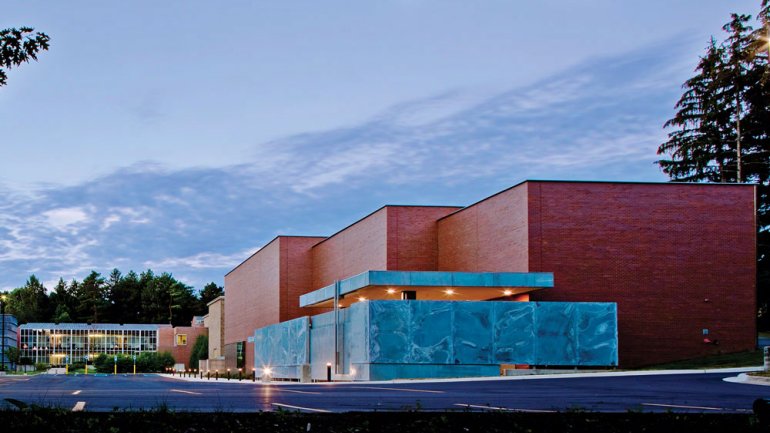Improving a Classic
Improving a Classic
There's perhaps no place where the history of American art and design is more present than at Cranbrook Academy of Art. The celebrated campus, designed by Eliel Saarinen, has played host to generations of influential artists, architects, and designers, including Charles and Ray Eames, Jack Lenor Larsen, Walter Hamady, and Toshiko Takaezu. The property is a National Historic Landmark, and, naturally, changes to it are not taken lightly.
That's why - despite a two-year renovation - most visitors won't actually notice any big changes to the building housing the Cranbrook Art Museum, which reopened November 11 with the inaugural exhibition, "No Object Is an Island: New Dialogues with the Cranbrook Collection." The structure's updates, the first since it opened in 1942, bring the museum up to modern standards for climate control, lighting, and security. More noticeable: the brand-new 20,000-square-foot New Collections Wing, which triples the overall size of the institution.
Changes in the original building, which remains the primary exhibition space, were seamless in large part because of Saarinen's forethought, says Reed Kroloff, director of Cranbrook Academy of Art and Art Museum. Saarinen (also the academy's first president) "was a brilliant architect," he says. "He created enough space in the design of the building so that we were actually able to do all of [the renovations] without altering his original concept for how the building works."
The New Collections Wing, a standalone building, connects to the museum by tunnel in order to maintain the visual integrity of the original Saarinen structure. The wing houses all of the new mechanicals for the renovated museum and dedicated storage for the museum's approximately 6,000-object collection. The addition is central to Cranbrook's stated mission of "providing direct experience with modern and contemporary art, architecture, and design"; works are now more accessible to scholars, students, and teachers.
"We've got a dynamic and lively collection that many people are going to recognize huge parts of," Kroloff says. Visitors likely are already familiar with iconic works by Cranbrook faculty and grads, such as New York subway cars, St. Louis' Gateway Arch (designed by Saarinen's son, Eero, who grew up on the Cranbrook campus), and Eames chairs; but "there are many [other] pieces that [people] are going to recognize as ending up in their living room at some point, after starting out at Cranbrook."
That kind of interaction and connection with history is also the foundation of the museum's first post-renovation exhibition. "No Object Is an Island" groups 50 works from the museum's collection with new work from artists asked to respond to those pieces, creating a conversation among artists and objects, from past to present day.
"People need to understand the museum as a place of process, not simply a place of storage," Kroloff says. "We hope to overturn that sense of museums as dusty, dark, inaccessible places that every now and then pull out some creaking old chestnut for you to wander by and see in the gallery."
"No Object Is an Island" runs through March 25, 2012. Andrew Zoellner is American Craft's assistant editor.

